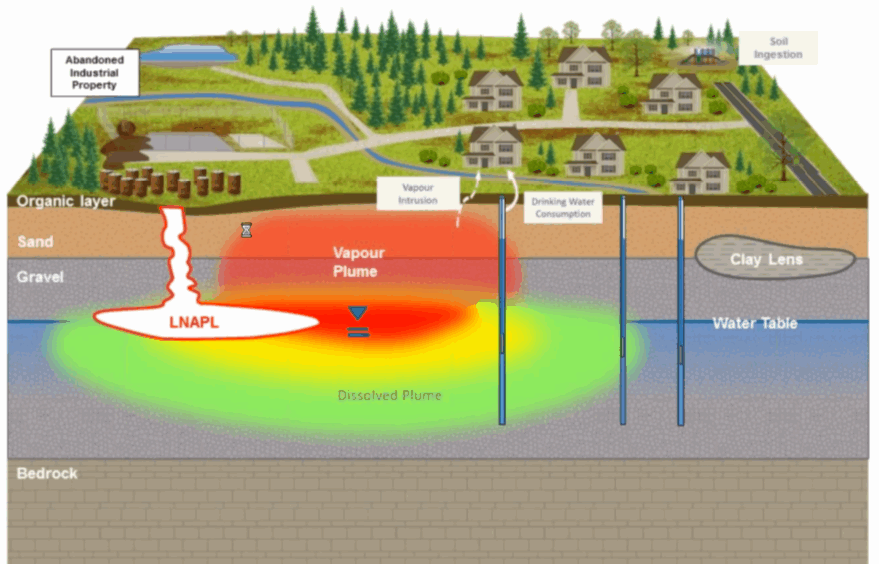We work with clients to develop a targeted risk assessment approach based on a realistic conceptual site model, in line with government statutory guidance
Contaminated land risk assessment is the overarching process used to ensure a site or development will not present unacceptable risk to those occupying, using or otherwise affected by it. With the degree of risk being closely related to the proposed use, rather than the mere existence of contamination alone, this is known as ‘the suitable for use approach’.
There is no shortage of case study material relating to sites where risk assessment was not applied properly or was not yet the norm, with the subsequent discovery that the land is not “suitable for use”, for example as residential gardens. This unfortunate situation is usually an artefact of our industrial past, and can ultimately lead to determination as contaminated land under the Environmental Protection Act.
We undertake both qualitative and quantitative risk assessments as necessary to meet the demands of regulators, building control, the Environment Agencies, or the requirements of stakeholders.
A risk based approach is often employed in identifying and/or prioritising sites for development, disposal or acquisition. Local authorities also utilise risk assessment to in their role as regulators which allows them to issue a remediation notice and bring further enforcement action where unacceptable risk is identified.

Phase
Any credible and compliant contaminated land assessment will always be founded on information gained from a desk study and phase 1 preliminary risk assessment, especially if regulator acceptance is required.
Equally importantly, it is often possible to exit the risk-assessment process at this stage without advancing to costly intrusive phase 2 investigation works on site; this typically occurs where the desk study review of records on historical land-use, such as historical mapping, aerial photography, trade directories and anecdotal knowledge indicate significant contamination is unlikely and the overall risk is acceptably low.
Similarly, qualitative assessment of the above factors together with available environmental data such as local geology, controlled waters, abstractions, protected sites and proposed site use may lead to the conclusion that a significant pollutant or contaminant linkage is unlikely to affect the development or wider environment.
Whether you require risk assessment for a single plot development, an oil refinery, or anything in between, EMBM has the capabilities and experience to devise the optimum solution for your project.
Where the preliminary (phase 1) risk assessment has identified a risk of significant contamination at a site, phase 2 investigation is undertaken to obtain chemical data on subsurface conditions at the site. Equally, the information obtained during phase 1 may be sufficient for the parties to decide against further investigation.
Phase 2 involves the collection of physical samples, which are then subjected to laboratory analysis for relevant contaminants identified during the desktop study.
Soil samples may be retrieved from hand-dug trial pits or with the use of machinery such as a mechanical excavator, and in some cases from boreholes formed with a drilling rig or window sampling rig. In some cases, groundwater samples may be retrieved from trial pits but more commonly, groundwater sampling (if required) is undertaken via dedicated monitoring wells installed to greater depths. These intrusive site works are generally referred to as site investigation.
Data on soil, groundwater, or surface water conditions obtained from the above intrusive sampling and lab analysis are then compared with applicable thresholds to establish whether or not they exceed these standards. This quantitative assessment provides an indication of the degree of risk to receptors such as sensitive site users or the wider environment and may be applied in one or more of the scenarios below.
